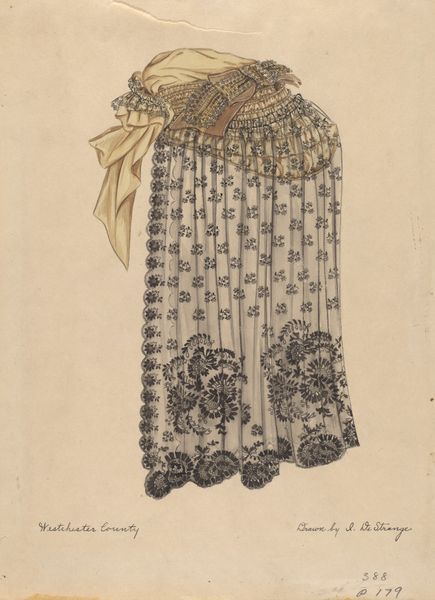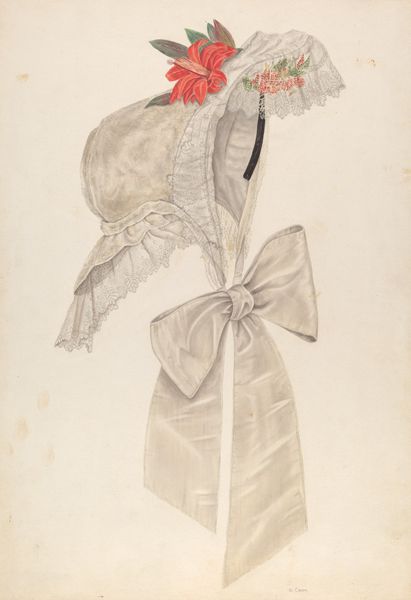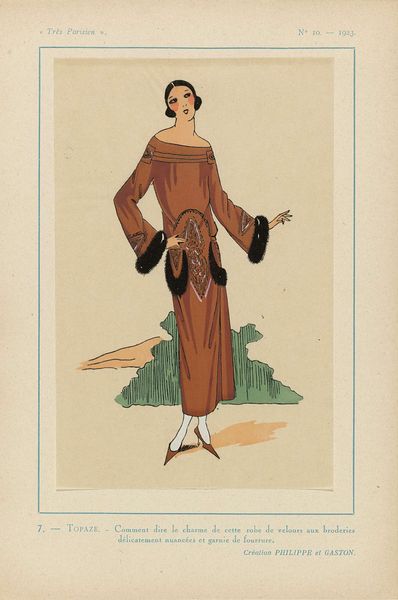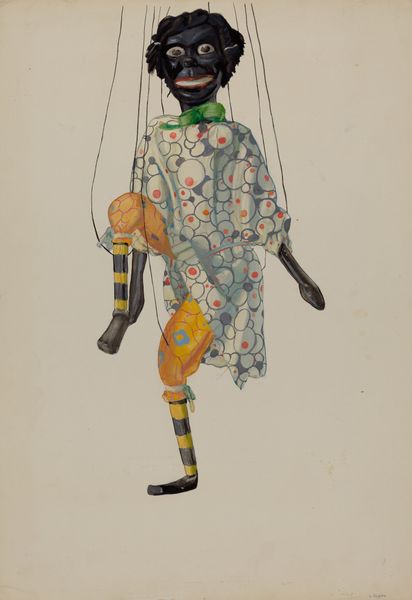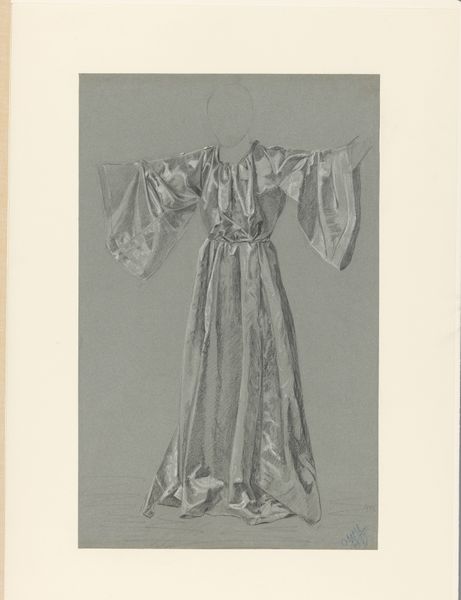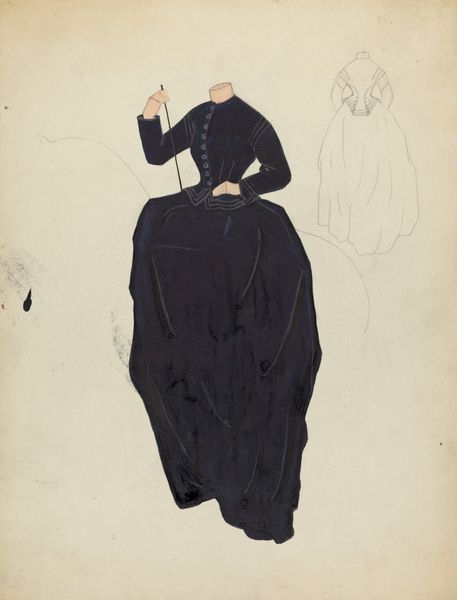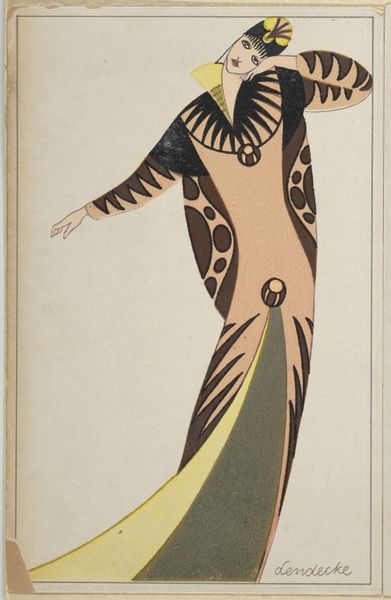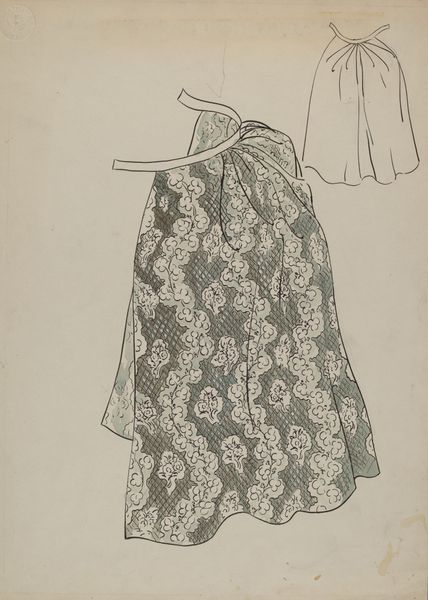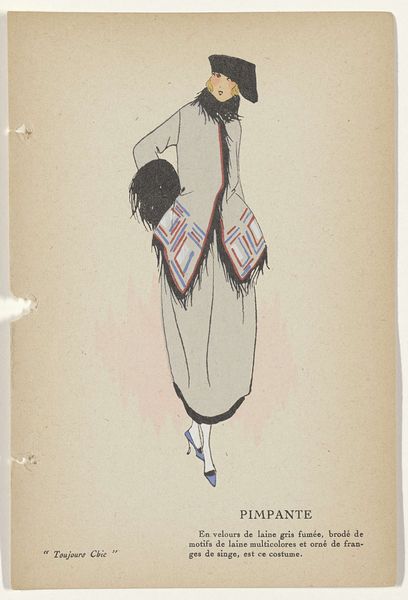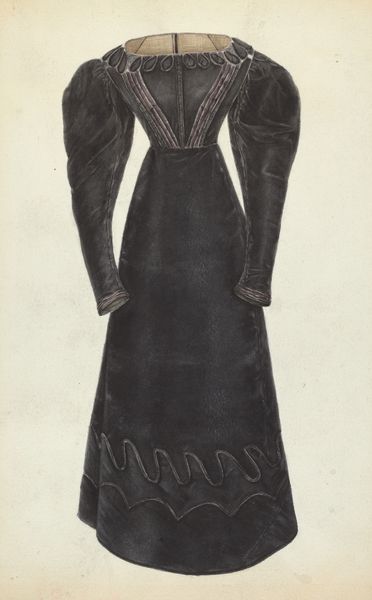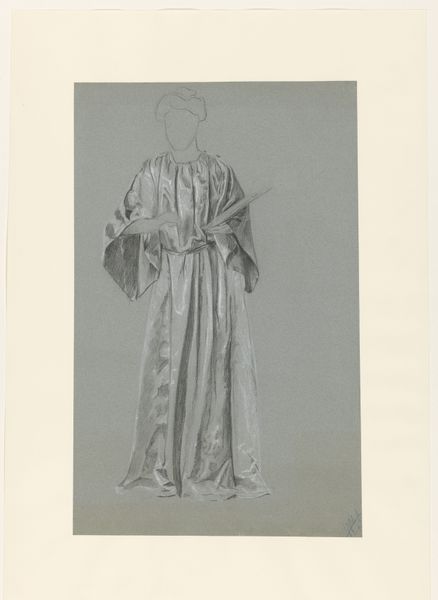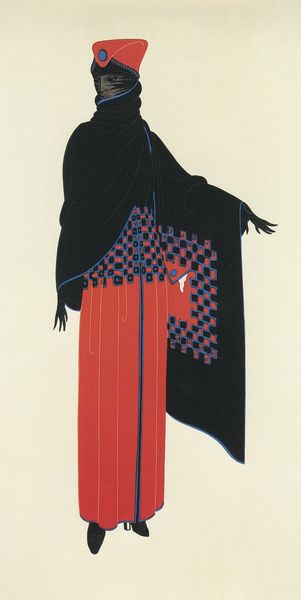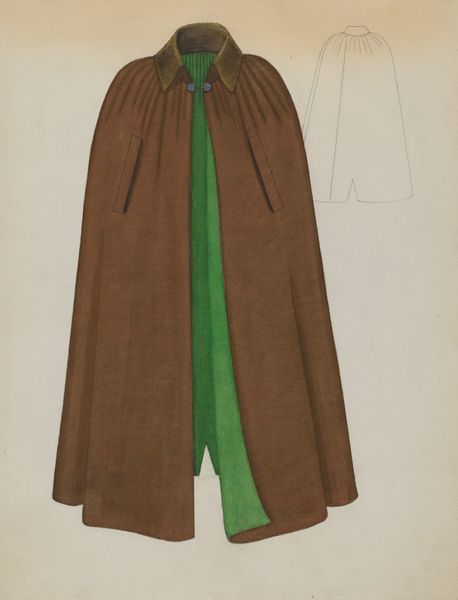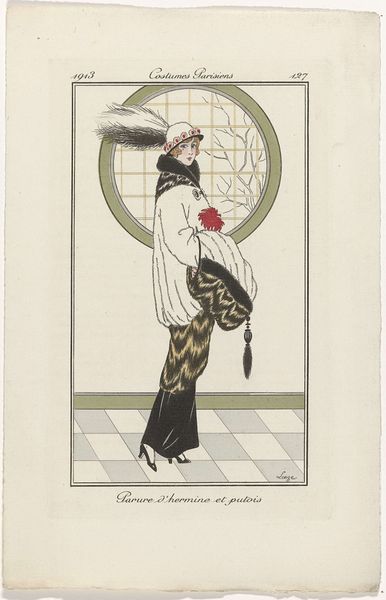
drawing, watercolor
#
drawing
#
watercolor
#
historical fashion
#
character design
#
watercolour illustration
#
decorative-art
Dimensions: overall: 29.3 x 23.1 cm (11 9/16 x 9 1/8 in.)
Copyright: National Gallery of Art: CC0 1.0
Curator: Bessie Forman created this "Headdress" around 1937, a striking work rendered in watercolor and drawing techniques. What’s your initial impression? Editor: It feels incredibly theatrical. The monochrome palette, the cascade of tassels—there's an undeniable drama here. I’m immediately drawn to the contrast between the densely textured leaves and the smooth ribbons. Curator: Indeed. Looking at it through a historical lens, costume design, especially for theater and film, underwent significant evolution during the 1930s. These sorts of preliminary drawings became increasingly important. Editor: Precisely. The choice of grayscale seems deliberate. It throws focus onto texture, the subtle interplay between light and shadow. Note the economy of line and color in describing form—it directs our attention toward shape. The composition's structured asymmetry gives the work energy. Curator: And thinking about it more broadly, we also see influences from Art Deco in costume and design at the time—think about a renewed interest in classical motifs and streamlined shapes. The cascade of tassels perhaps suggests exoticism in a fashionable visual language. Editor: I see that. But look closely; the shapes formed by the leaves create this jagged silhouette at the upper edge. And the tassels draw your eye to an almost decorative, perhaps even excessive, level. This really enhances that feeling. Curator: Perhaps Forman's work also participates in anxieties or aspirations around representations of female roles at this time, reflecting social or cultural norms… Headwear of course could convey a variety of signals regarding gender or class, as one obvious line of inquiry. Editor: Absolutely. In its graphic sensibility, Forman really underscores the artificiality of representation—in costume and perhaps beyond! Considering color separately: imagine this piece saturated in deep greens and golds. But by minimizing color, we focus on the interplay between forms, lines, and light. Curator: Well, considering it together, seeing the "Headdress" this way gives us insight into a particular period’s theatrical aspirations and social considerations. Editor: Agreed; focusing closely on formal qualities enhances that broader context considerably.
Comments
No comments
Be the first to comment and join the conversation on the ultimate creative platform.
